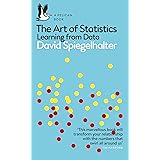Fitting Linear Regression Models in SAS Using PROC REG
Fitting Linear Regression Models in SAS Using PROC REG, linear regression is a fundamental technique for modeling relationships between variables.
In SAS, the PROC REG procedure is an excellent tool for fitting both simple and multiple linear regression models.
Fitting Linear Regression Models in SAS Using PROC REG
This article will explore how to utilize PROC REG to analyze data and interpret the results.
Fitting a Simple Linear Regression Model
To fit a simple linear regression model using SAS, you can follow this basic syntax:
proc reg data=my_data;
model y = x;
run;In this example, the model takes the form:
y = b0 + b1x
Where (y) is the dependent variable and (x) is the independent variable. This model allows you to examine how changes in (x) affect (y).
For multiple linear regression, the syntax expands to include several predictors:
proc reg data=my_data;
model y = x1 x2 x3;
run;This will fit a model represented by the equation:
y = b0 + b1x1 + b2x2 + b3x3
Example: Using PROC REG for Simple Linear Regression
Let’s consider an example where we have data on hours studied and final exam scores from 15 students. First, we create the dataset:
/* Create dataset */
data exam_data;
input hours score;
datalines;
1 64
2 66
4 76
5 73
5 74
6 81
6 83
7 82
8 80
10 88
11 84
11 82
12 91
12 93
14 89
;
run;
/* View dataset */
proc print data=exam_data;
run;In this dataset, hours represents the number of hours studied, while score represents the final exam score.
Next, we can use PROC REG to fit a simple linear regression model:
/* Fit simple linear regression model */
proc reg data=exam_data;
model score = hours;
run;Interpreting the Output
After running the procedure, SAS will provide a detailed output that includes a table summarizing the model fit and the parameter estimates.
The key part of the output you’ll want to focus on is the Parameter Estimates table. From this table, you can deduce the fitted regression equation:
[
\text{Score} = 65.33 + 1.98 \times (\text{hours})
]
This equation suggests that for every additional hour studied, the exam score increases by an average of 1.98 points.
Visual Analysis of the Model
In addition to the numerical output, PROC REG also generates residual plots. These plots are helpful in evaluating whether the assumptions of linear regression—such as homoscedasticity and normality of residuals—are met.
Moreover, you will also see a scatter plot of the original data with the fitted regression line overlaid. This visualization allows you to assess how well the regression model fits the observed data points.
Conclusion
Using PROC REG in SAS provides a powerful means to analyze relationships between variables through linear regression.
Whether you’re fitting a simple or multiple linear regression model, SAS offers comprehensive output that facilitates interpretation and visual validation of the model’s performance.
With these tools at your disposal, you can enhance your data analysis capabilities and extract meaningful insights from your datasets.
XGBoost’s assumptions » FINNSTATS



